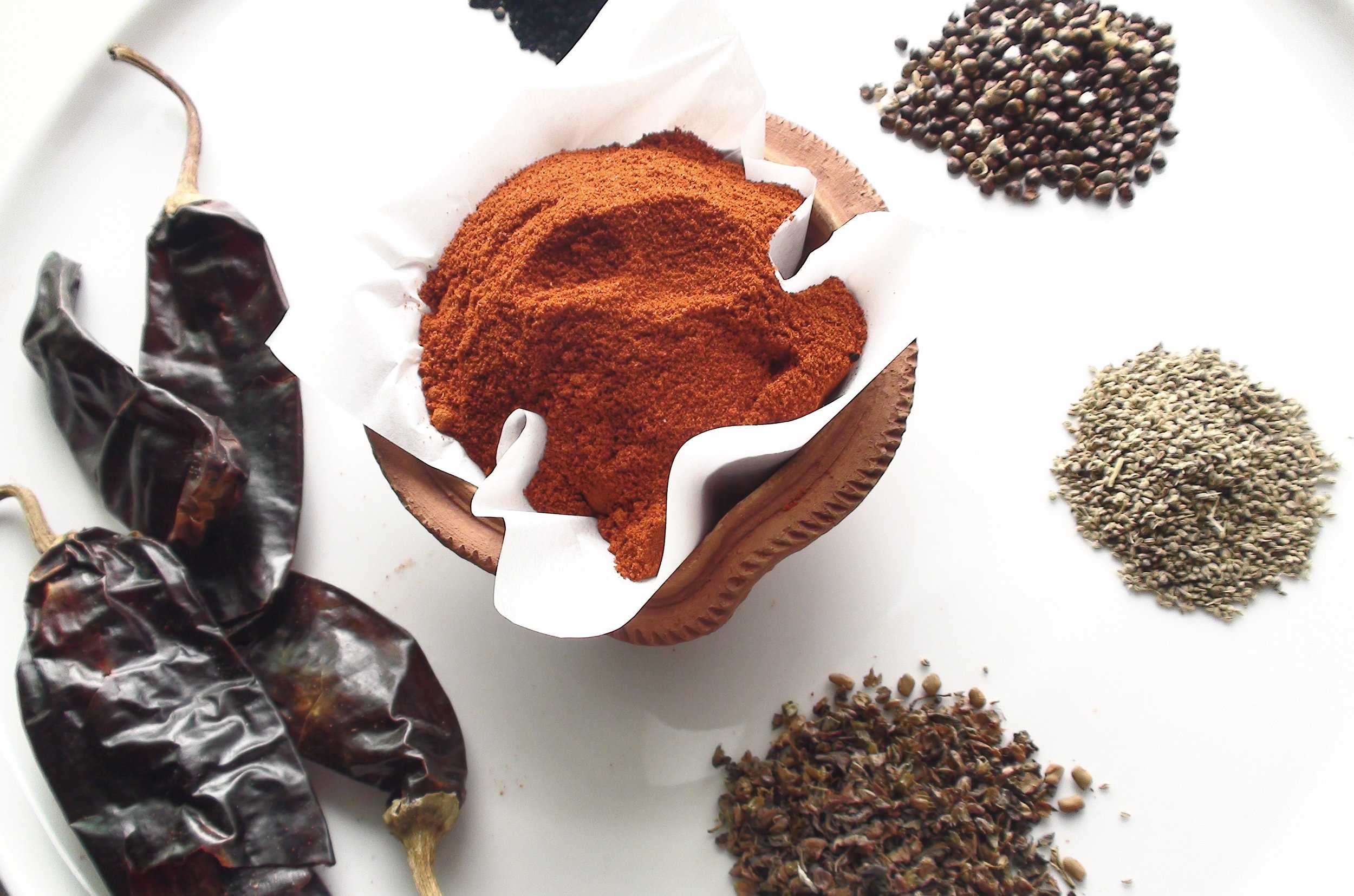When you walk into an Ethiopian grocery store or look online for Ethiopian spices, you might be overwhelmed by the sheer number and variety of spices available. Never fear! Here is a list of the five most important spices in Ethiopian cuisine, the ones you need for most Ethiopian food cooking.
Berbere
If there is only one spice to have for Ethiopian stews and stir-fries, it should be Berbere. Berbere is a blend of many spices, so adding just this to your stew will give lots of flavor and complexity. It’s easier to add Berbere to your cooking than to measure a tiny bit of each spice—so this makes cooking much quicker! All the necessary spices are included in Berbere, including many of the spices listed below.
Check this recipe to see all spices included in Berbere.
Turmeric
This is considered the second main spice in Ethiopian cooking. It is a widely used spice for mild dishes and veggie stir fries. Not only does Turmeric makes your dishes look vibrant and appetizing with its bright yellow color, it’s also full of health benefits. Turmeric is preferable for fast cooking. Unlike Berbere, which needs to simmer for a long time to develop the flavors, Turmeric needs just a couple of minutes of cooking to release its flavor.
Korerima / Black Cardamom
This is one of my favorite spices that I add to stews and stir-fries. Black Cardamom, or Korerima, is different than the Green Cardamom you find in most stores. Green Cardamom is usually used for hot teas and sweeter dishes, whereas Black Cardamom is used for savory cooking. In Ethiopia, Korerima comes in a pod, but it’s the seed inside that’s typically used for cooking. In Ethiopian stores here, you will find either the whole seed or ground Korerima. If you buy the seed whole, toast on a skillet for a couple of minutes and then grind.
Roasting Korerima
Tikur Azmud / Black Seed
Tikur Azmud is not a main cooking spice, but a subtle flavor enhancer. A little goes a long way, and too much can easily overpower the dish. Mostly paired with Berbere, Tik Azmud is best added midway through cooking to keep the aromas of the other spices. Tik Azmud is nice with bread, like adding sesame. The oil has been used traditionally for medicine, in the form of teas. Stores usually sell the whole seed, which you can toast and grind using a spice or coffee grinder.
Nech Azmud /Ajwainee Seed
Like Tikur Azmud, Nech Azmud is also a flavor enhancer rather than a main spice. It brings a pleasant, nutty flavor to mild dishes and dishes cooked with Turmeric. Nech Azmud may also be found in Mediterranean and Indian grocery stores, as it’s popular in these cuisines as well. Nech Azmud is sold as a whole spice that can be toasted and ground at home. Remember, like Tikur Azmud, a little goes a long way!


